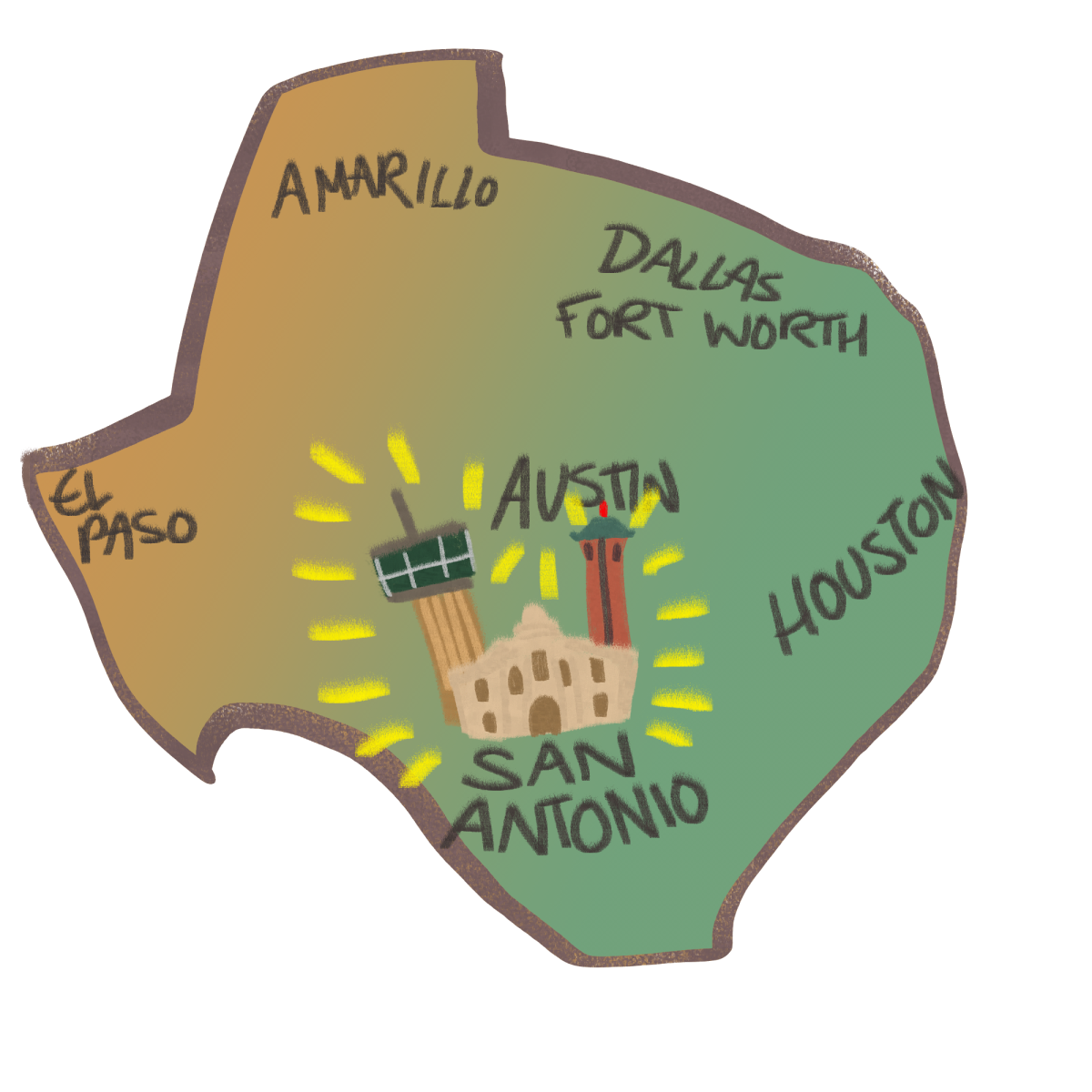In San Antonio we have an awesome festival every fall called Luminaria that just finished up this past weekend. It is a night dedicated to the arts, and it’s completely free, and in the usual San Antonio fashion, very family friendly. I was moved by a play entitled “Sanctuary,” and confused by some more avant-garde art that I am not sophisticated enough to understand.
It is held downtown, at Hemisfair Park, and as I walked through the paths of stone, I remembered what it was like just a few years ago when I was a freshman. It’s amazing how quickly it has developed, with a playground for adults and other neat public spaces, and I began to be quite curious about how it looked even further back in time.
Fifty years ago, San Antonio hosted the 1968 World’s Fair. It was called Hemisfair, located in this very park, the fair’s namesake. The dream was to hold it beneath a skyscraper, which we now recognize as the iconic Tower of the Americas. I had no idea it was built for the World’s Fair. In addition to the tower, the building that is today the Institute of Texan Cultures, the Courthouse, and a huge convention center were built.
The World Fair had over 25 different host cities at its peak in the 1930s, but over time the spread of these international celebrations has focused in on just a few cities each year. In 2015, for example, Milan was home of that year’s EXPO, as it began to be called in the new millennium. I remember when Milan was undergoing preparation for this event; the airport was updated, structures built, who knows how much was invested.
According to Hemisfair’s website, a majority of what was built for the fair has been demolished. A beautiful sculpture by a Trinity professor, Bill Bristow, is now a flowerbed. Hundreds of buildings designed by over 40 architects were abandoned or demolished.
In a Trinitonian article on April 5, 1968, it was noted that over seven million visitors would be coming to San Antonio for the 250th anniversary of its founding.
Does it strike you as much as it does me that some of our most significant city buildings were developed for the world stage and not the local inhabitants of the city? Even now, the divide between visitors and locals persists, as do the slanted decisions being made about development.
In 2020, only one city has been announced for the EXPO, and that is (unsurprisingly) Dubai. They at least have the amount of capital needed to make this thing happen.
At the time, 1968, the city of San Antonio invested over $150 million to the project of hosting this momentous fair, equivalent to $1.06 billion today.
That’s a lot of money to invest to be a host of an event, what else sounds like this? Well, the Olympics, you might say. But some would say competing for Amazon HQ2.
Over 250 cities applied to get the HQ2 designation from the $150 billion revenue-generating giant. San Antonio was not one of them, even though it promised 50,000 new jobs. My personal jury is still out on whether this was a good or bad move, but I can see both sides.
The difference is that once invested in developing San Antonio for the bid, the infrastructure would not simply be abandoned, but would be useful every day for employees and residents.
Unlike these one-off events that are extremely capital intensive, including the upcoming tri-centennial celebrations, improving our city to host Amazon seems like a good long term investment. Especially when we consider the number of retail related jobs that Amazon is disrupting.
Additionally, Amazon’s tech-focused city would draw international attention and competition to the city. But think how that might affect the fabric of the local life.
How would the identity of San Antonio change? Would it be for the better? Why spend all that money on things that are, once again, for an international stage instead of focusing on those who live here?
It’s honestly a moot point, because deep in our hearts, though we love this city, we know we would never beat out metropolitan areas like Dallas, Chicago or Atlanta, so throwing a bunch of money at this attempt really isn’t wise.
Fun fact: Included in the sights and activities of Hemisfair was a “classroom of the future” by which “users were encouraged to use unusual electronic equipment, play unknown games, and to dance.”
We’ve come a long way in just 50 years, as I type this on my laptop computer in Google Drive, but the age-old question of how to stimulate urban revitalization is still here.






